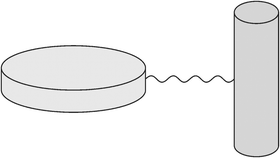Biaxial nematics: computer simulation studies of a generic rod–disc dimer model
Abstract
One possible route to the elusive biaxial nematic phase is through rod–disc dimers in which the rod and disc mesogenic units are linked via a flexible spacer. We have developed a continuous generic model of such rod–disc dimers in which neighbouring like groups tend to align parallel to each other while unlike groups tend to be orthogonal. A torsional potential controls the relative orientations of the groups within a single dimer; depending on the strength of the torsional potential, the groups may be orthogonal or parallel in the conformational ground state. Monte Carlo simulations show that a rigid rod–disc dimer is most likely to form a biaxial nematic phase if the anisotropies of the two groups are the same. Introduction of flexibility is found to have little effect on the qualitative behaviour of the dimer as the relative anisotropy of the two mesogenic groups is changed. However, when the torsional potential strongly favours the alignment of the rod and disc within a single molecule with their symmetry axes parallel there is a dramatic change. The system then exhibits a strong hysteresis in the molecular shape and biaxiality and the biaxial nematic–isotropic transition becomes strongly first order, in marked contrast to the second-order character usually found for this transition. This first-order transition is observed to occur for a range of relative anisotropies of the two groups rather than at a single point.


 Please wait while we load your content...
Please wait while we load your content...